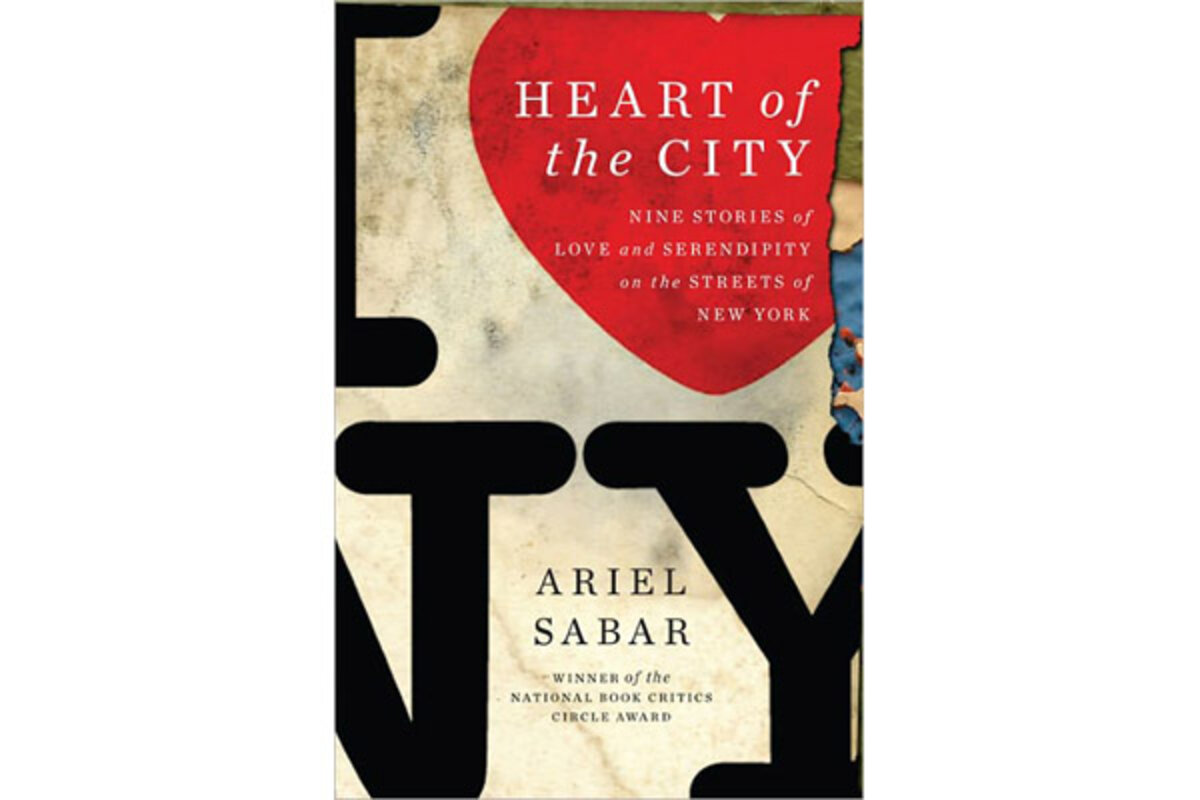Heart of the City
Loading...
My parents, who recently celebrated their 62nd anniversary, met on the Brighton Beach, Brooklyn, elevated subway platform in 1948. They were introduced by a mutual acquaintance, and my father, a brash, brainy 20-year-old, managed to snag the seat next to my pretty mother for their long commute up to the Washington Heights campus of New York University. Well before they reached their destination, he’d arranged their first date.
In Heart of the City, Ariel Sabar, whose parents met in Washington Square Park on Labor Day, 1966, chronicles nine love stories that began with chance encounters at various New York City landmarks. He wonders, “Could a vibrant public space, in some subtle but essential way, play matchmaker?”
Sabar won a National Book Critics Circle award for autobiography for his first book, “My Father’s Paradise” (2008), about his father’s journey from Kurdish Iraq to Los Angeles. As he acknowledges, “Heart of the City” is a much lighter undertaking. He attempts to extract deeper meaning from his tales of serendipitous love by exploring the work of various environmental psychologists concerning the possible “nexus between passion and place, between architecture and attraction.” But his long introduction feels like the blood test required for a marriage license, more hurdle than pleasure.
The stories themselves, which range from the 1940s to the present, are sweet and charming, if unabashedly sentimental. Most of them hinge not just on an openness to new experience, but a trust in strangers or a willingness to help a lost soul. Several of the couples make an initial connection only to nearly lose each other forever. All of the relationships he chooses to chronicle are heterosexual and enduring.
When judged by literary standards, Sabar’s narratives, to which he’s added imagined dialogue and enhanced details to fill in the blanks, are hokey and oversimplistic. Their power lies in their factuality, which Sabar only belatedly underscores in a final chapter called “Postscripts,” where he relates what became of each couple and how he came upon their story. This material, along with his more theoretical concerns, would have been more effective incorporated into the stories.
Two tales involve sailors. In “Green,” Quartermaster Third Class Willis Langford encounters Paula Filip, a waifish, desperate runaway, in Central Park in 1941, as she attempts to light a cigarette – a veritable little match girl. “Drawn in by her helplessness,” he buys her a meal and makes her promise to meet him the next day. But his orders change and he ships out immediately for the Philadelphia Naval Shipyard, so he sends a note via a friend, which she clings to like a lifesaver.
When she’s arrested for vagrancy a few days later, Helen Worden, the reporter from the New York World-Telegram who broke the Collyer Brothers story in 1938, features her in a human interest sob story. Down in Philadelphia, Willis sees the story and, through Worden, reconnects with Paula. They’re swept up in “a hurricane of publicity” which is interrupted by the bombing of Pearl Harbor.
By the time Sabar found the story of the “Park Cinderella” and her “Sailor Prince Charming” in a newspaper database, Paula was four years dead. He learned that, unlike his other subjects, she was so eager to bury her unhappy past she harbored no nostalgia for the spot where she met her husband of 63 years. In fact, she never returned to New York.
Not so with the couple who met at the Empire State Building – on one anniversary, they visit the quarry from which its limestone facade was harvested.
Several tales involve Americans who empathize with how tough and overwhelming New York can be for foreigners. Newly divorced Virginian Tina Wagenbrenner is reminded of her Bavarian-born father’s “fellow feeling for new arrivals to America” when she meets a young German with a “Terminator” accent en route to the Statue of Liberty in 1988. Music critic Milton Jennings – one of several pseudonyms – writes his phone number on a map he gives to the woman newly arrived from Manila who asks for directions to Chinatown on the empty subway train from JFK airport.
“Heart of the City” is about what can happen when people let down their guard in a sharp-elbowed, often daunting, city, where “routine contact with strangers is a fixture of public life.” A random encounter can change everything.
Heller McAlpin, a freelance critic in New York, is a frequent Monitor contributor.





